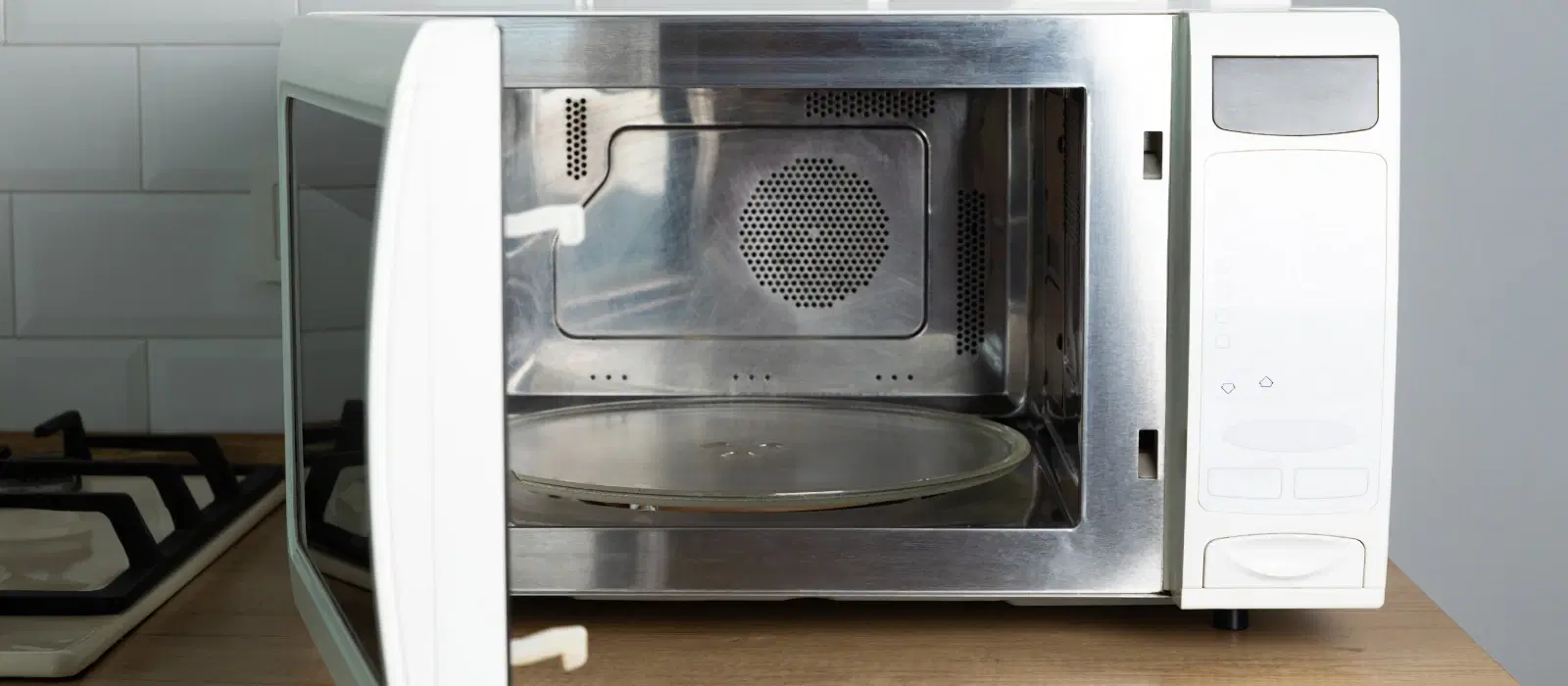
Home Appliances
•04 min read

Buy IFB 30FRC2 30L Convection Microwave Oven with 101 Autocook Menus (Black Floral) online at best prices from Croma. Check product details, reviews & more. Shop now!
Whether you’re remodelling your kitchen or upgrading your microwave, understanding cabinet dimensions is key to achieving a seamless fit and optimal functionality. Accurately measuring microwave cabinet dimensions can be the difference between a beautifully integrated kitchen and one that feels clunky or even unsafe. This guide will walk you through why precise measurements are crucial, share step-by-step instructions for measuring your microwave cabinet dimensions, and help you explore custom cabinet design ideas that meet your unique needs.
Microwave cabinet dimensions are a fundamental part of kitchen design. They not only affect the aesthetic appeal of your space but also determine the functionality and safety of your setup. Incorrect measurements can lead to issues like inadequate ventilation, making your microwave vulnerable to overheating, or simply a design that feels out of place. For example, failing to account for proper clearance can compromise both the performance and longevity of your appliance. In contrast, precise measurements ensure that every element, from cabinet trim to appliance alignment, works together beautifully to create a harmonious space.
A common starting point for most households is the standard microwave cabinet size. Typically, you can expect standard dimensions to be around 24-30 inches wide, 15-18 inches high, and 20-24 inches deep for a built-in microwave cabinet. Knowing these measurements not only helps in planning your kitchen layout but also provides a benchmark when considering adjustments for unique spaces or custom microwave cabinet design. Remember, every detail counts – from microwave cabinet height to microwave cabinet width – to achieve both functional and aesthetically pleasing results.
Before you begin, gather the essential tools: a reliable measuring tape, a level to ensure precision, and a notebook to record your dimensions. Accurate measurement is the foundation of a successful installation, and here's how you do it:
Start by measuring the height of the cabinet from the internal floor to the top edge of the opening, ensuring you note down the microwave cabinet height. Next, measure the microwave cabinet width by tracing the width of the opening where the appliance will be installed. Lastly, measure the microwave cabinet depth; this is important for built-in microwave cabinet dimensions and helps to ensure that your appliance doesn’t sit too far back or protrude awkwardly. When measuring, be mindful of any trim or doors that might affect the final dimensions, and always consider extra clearance for ventilation.
Where you plan to place your microwave in kitchen cabinets can impact the clearance requirements and overall design. For countertop models, ensure the cabinet’s dimensions allow for both the appliance and the additional space needed for easy access. For over-the-range or built-in microwaves, additional clearance is essential for proper ventilation and safety. By reflecting on these aspects and documenting your measurements carefully, you can achieve a layout that is as functional as it is stylish.
Pro Tip from Tata Neu: Did you know? Ensuring proper ventilation for your microwave cabinet not only prevents overheating but can also extend the lifespan of your appliance. Aim for at least 2 inches of clearance on all sides for built-in models.
While standard measurements work for many, there are instances when custom microwave cabinet design is the best approach. Unique kitchen layouts or non-standard microwave sizes often require bespoke solutions. Custom designs allow you to maximise cabinet space and integrate clever storage ideas that merge functionality with style, such as pull-out drawers or additional shelving for extra microwave cabinet storage ideas. By opting for a tailor-made design, you can ensure that every element—from the clearance around the microwave to overall accessibility—is optimised for your specific needs.
Leaving appropriate clearance around your microwave is not only about aesthetics but also about safety concerns. For instance, whether you have a countertop, over-the-range, or built-in microwave, a recommended clearance of at least 2 inches on all sides is crucial for adequate ventilation and heat dissipation. This extra space helps prevent overheating and ensures that your appliance works efficiently over time.
Installing your microwave within the cabinet need not be a challenging task if you follow a few simple tips. Ensure that the cabinet or the designated space is level before installation. Securing the appliance properly is essential, so always double-check the alignment and anchorage. Avoid common pitfalls such as neglecting small misalignments which can eventually cause the microwave to function improperly or even become a safety hazard. With proper clearance, stable installation, and careful measurement, you will enjoy a sleek and reliable kitchen setup.
Standard microwave cabinets typically measure 24-30 inches wide, 15-18 inches high, and 20-24 inches deep.
Built-in microwaves require cabinets designed with proper ventilation clearance of at least 2 inches on all sides, accommodating both the appliance’s dimensions and any additional structural features.
A minimum clearance of 2 inches on all sides is essential to ensure adequate ventilation and safe operation of the microwave.
While it is not absolutely necessary, a dedicated microwave cabinet can offer the benefits of a precise fit, proper ventilation, and integrated storage solutions, contributing to a more refined kitchen design.
Accurately measuring microwave cabinet dimensions is a vital step to both a functional and visually appealing kitchen. By following this guide, you gain a clear roadmap—from understanding the significance of each measurement to customising your cabinet design and ensuring proper clearance during installation. With these insights, you’re well-equipped to plan a kitchen layout that seamlessly integrates your microwave while enhancing overall efficiency and style. Explore more expert guidance to make well-informed decisions and enjoy the added benefits and rewards of smart, seamless shopping experiences.